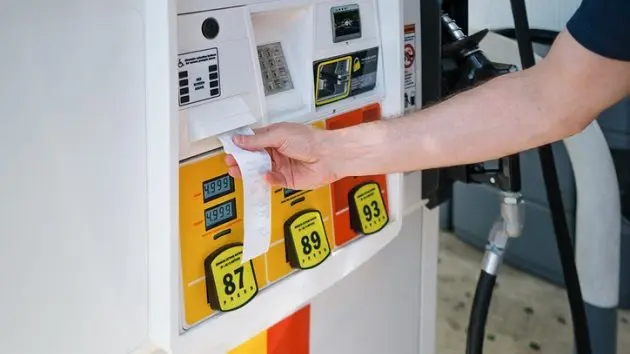So far, the summer of 2025 has brought just small fluctuations at the pumps. Crude oil prices have remained in the $60s for much of the summer, which has translated into stable gas prices. The wild card continues to be hurricane season. Any storm that impacts the Gulf Coast, which accounts for a big portion of oil and gas production in the U.S., has the potential to disrupt supplies. For the week, the national average for regular edges down one cent to $3.13 a gallon. The Oregon average ticks down one cent to $3.98 a gallon.

“The quiet summer at the pumps continues as we enter the final weeks of the season including the upcoming Labor Day holiday. With crude oil prices remaining steady, it appears gas prices will stay calm as well,” says Marie Dodds, public affairs director for AAA Oregon/Idaho. “As we enter peak hurricane season, we’ll watch for any storms that could impact production and distribution of oil and gas. Markets also continue to watch what happens in talks with the U.S. Russia, and Ukraine to end the war in Ukraine, which began more than three years ago when Russia invaded Ukraine. If sanctions are eased against Russia, crude oil prices could move lower.”
Labor Day travel promises to be busy this year, capping off a record-setting summer for travel. AAA booking data shows that Alaska cruises, theme parks, Central Oregon and the Oregon Coast are the most popular destinations for members of AAA Oregon/Idaho. AAA says the good news for travelers is that flights, hotels and car rentals cost less this year compared to 2024. Find all the details, graphics, and advice for travelers in the AAA Labor Day travel news release.
The Oregon average for regular gas began 2025 at $3.45 a gallon and is currently at $3.98. The highest price of the year so far is $4.076 on June 24 and 25. The lowest price of the year so far is just under $3.45 a gallon on January 2.
The national average began 2025 at $3.06 a gallon and is currently at $3.13. The highest price of the year so far is $3.268 on April 4. The lowest price of the year so far is $3.06 on January 5.
This week 18 Oregon counties have averages at or above $4, compared to 17 a week ago:
Clackamas $4.07
Clatsop $4.18
Columbia $4.14
Crook $4.01
Curry $4.12
Grant $4.19
Harney $4.19
Hood River $4.01
Jackson$4.01
Josephine $4.09
Lake $4.14
Multnomah $4.10
Sherman $4.05
Tillamook $4.19
Wallowa $4.16
Wasco $4.07
Washington $4.11
Yamhill $4.04
Demand for gasoline in the U.S. decreased from 9.04 million b/d to 9 million for the week ending August 8, according to the U.S. Energy Information Administration (EIA). This compares to 9.04 million b/d a year ago. Total domestic gasoline supply decreased from 227.1 million barrels to 226.3. Gasoline production ticked up last week, averaging 9.81 million barrels per day compared to 9.8 million barrels per day the previous week.
Pump prices will likely continue to see just small fluctuations as summer winds down, if WTI crude oil prices remain below $70 per barrel and there are no supply disruptions.
Gas prices typically rise starting in mid-to-late winter and early spring as refineries undergo maintenance ahead of the switch to summer-blend fuel, which is more expensive to produce and less likely to evaporate in warmer temperatures. The switch occurs first in California, which is why pump prices on the West Coast often rise before other parts of the country. The East Coast is the last major market to switch to summer-blend fuel. Most areas have a May 1 compliance date for refiners and terminals, while most gas stations have a June 1 deadline to switch to selling summer-blend until June 1. Switch-over dates are earlier in California with some areas in the state requiring summer-blend fuel by April 1. Some refineries will begin maintenance and the switchover in February.
Gas prices usually drop in the fall, due to the switch from summer-blend to winter-blend fuel, which costs less to produce. The switch starts in September. Many areas, including Oregon, can sell winter-blend fuel starting September 15. However, Northern and Southern California require summer-blend fuel through October 31. Prices usually decline to their lowest levels of the year in late fall and early winter before increasing again in the late winter and early spring.
The U.S. price of crude oil (West Texas Intermediate) had been mostly in the mid-$60s to mid-$70s since last September. Crude prices spiked to the mid-$70s in mid-June in response to the strikes between Israel and Iran, and then the U.S. strike on Iran’s nuclear facilities, but then prices fell back into the $60s on the belief that the conflict would not have a major impact on global oil supplies. Crude prices fell in early April as markets reacted to President Trumps tariffs and the impact on U.S. and global markets. Additional downward pressure on crude prices came after the decision by OPEC+ to increase production. The lowest closing price since September was $57.13 on May 5, which was the lowest closing price since February 2021. The recent high price for crude was $80.04 per barrel on January 15, which was the highest price since last August.
Crude oil is trading around $63 today compared to $63 a week ago and $74 a year ago. In 2024, West Texas Intermediate ranged between $66 and $87 per barrel. In 2023, WTI ranged between $63 and $95 per barrel. WTI reached recent highs of $123.70 on March 8, 2022, shortly after the Russian invasion of Ukraine, and $122.11 per barrel on June 8, 2022. The all-time high for WTI crude oil is $147.27 in July 2008.
Crude prices are impacted by economic news as well as geopolitical events around the world including the current economic uncertainty, unrest in the Middle East, the war between Israel and Hamas, and the war between Russia and Ukraine. Russia is a top global oil producer, behind the U.S. and Saudi Arabia. Crude prices have been volatile after the attack on Israel by Hamas in October 2023. While Israel and the Palestinian territory are not oil producers, concerns remain that the conflict could spread in the Middle East, which could potentially impact crude production in other oil-producing nations in the region. In addition, production cuts by OPEC+ in previous years tightened global crude oil supplies, which continued to impact prices. But this year, the cartel boosted production by 411,000 barrels per day in May and June, and July, 548,000 barrels per day in August, and another 547,000 barrels per day in September.
Crude oil is the main ingredient in gasoline and diesel, so pump prices are impacted by crude prices on the global markets. On average, about 52% of what we pay for in a gallon of gasoline is for the price of crude oil, 16% is refining, 16% distribution and marketing, and 16% are taxes, according to the U.S. Energy Information Administration.
Meanwhile, crude oil production in the U.S. remains near record highs. The U.S. Energy Information Administration (EIA) reports that crude production in his country rose from 13.28 to 13.33 million barrels per day for the week ending August 8. The record high is 13.63 million barrels per day for the week of December 6. Production has been at 13.5 million barrels per day many times since October. The U.S. has been the top producer of crude oil in the world since 2018 and has been increasing its oil production since about 2009.
Quick stats
Oregon is one of 39 states and the District of Columbia with lower prices now than a week ago. Michigan (-10 cents) has the biggest week-over-week decline in the nation. Indiana (+5 cents) has the largest week-over-week increase. Most states have just small fluctuations in pump prices this week with 46 states and the District of Columbia seeing their averages change by a nickel or less.
California ($4.49) has the most expensive gas in the nation for the third week in a row. Hawaii ($4.46) is second, and Washington ($4.40) is third. These are the three states with averages at or above $4 a gallon. This week 26 states and the District of Columbia have averages in the $3-range. There are 21 states with an average in the $2 range this week.
The cheapest gas in the nation is in Oklahoma ($2.67) and Mississippi ($2.69). No state has had an average below $2 a gallon since January 7, 2021, when Mississippi and Texas were below that threshold. At the time, the COVID-19 pandemic drove significant declines in crude oil and gasoline demand in the U.S. and around the world.
The difference between the most expensive and least expensive states is $1.82 this week, compared to $1.80 a week ago.
Oregon is one of eight states where the average price of gas is the same as a month ago. The national average is two cents less than a month ago. Wisconsin (-11 cents) has the largest month-over-month drop in the nation. Colorado (+8 cents) has the largest month-over-month increase.
Washington, Oregon and Alaska are the only states with higher prices now than a year ago. The national average is 28 cents less, while the Washington average is 19 cents more, the Oregon average is 13 cents more, and the Alaska average is two cents more than a year ago. Wisconsin (-49 cents) has the largest yearly drop.






